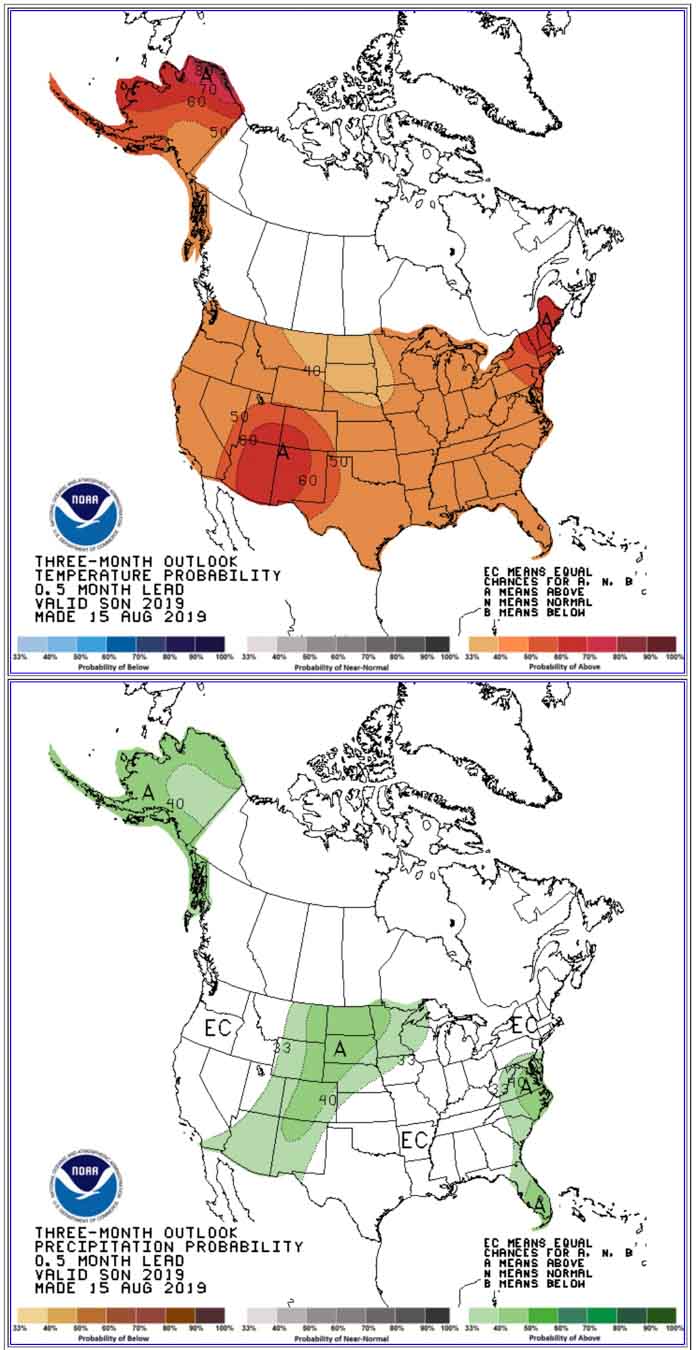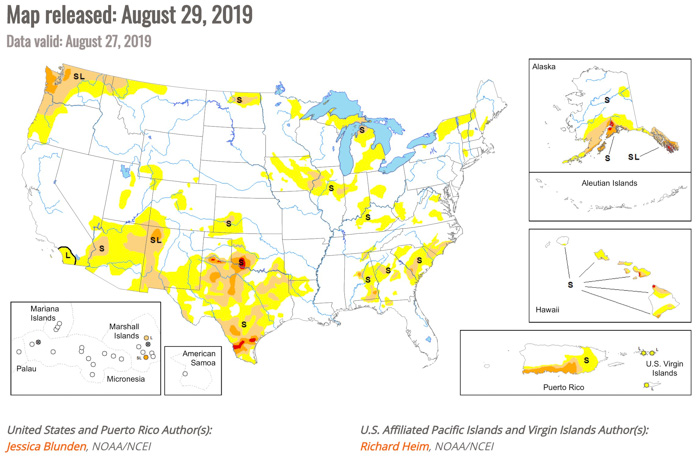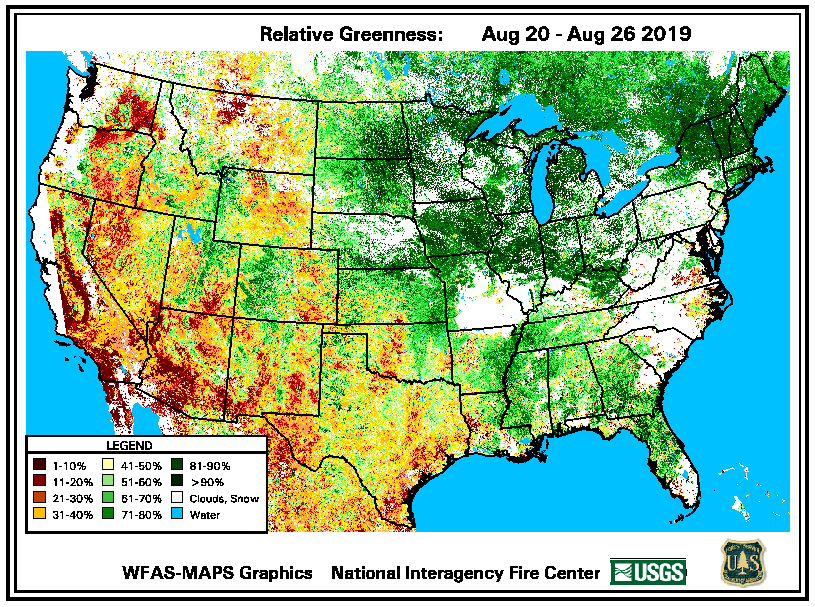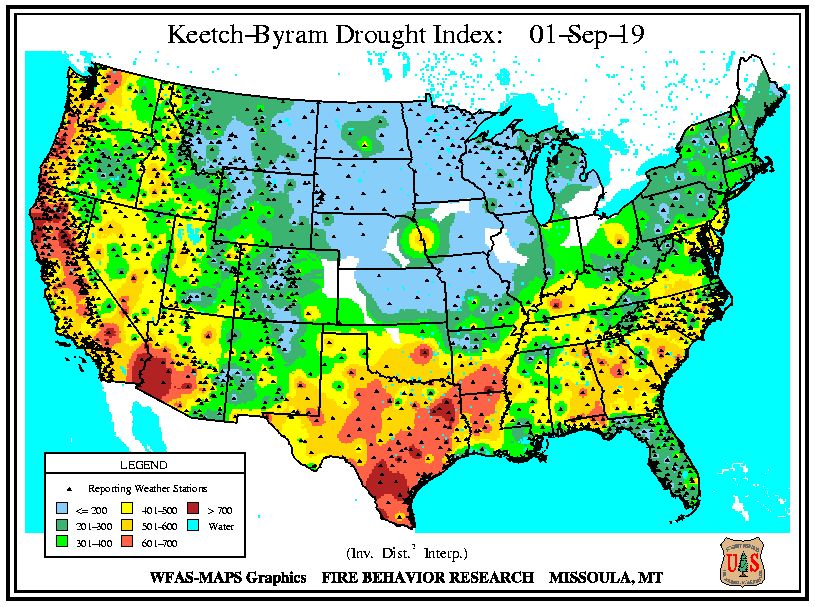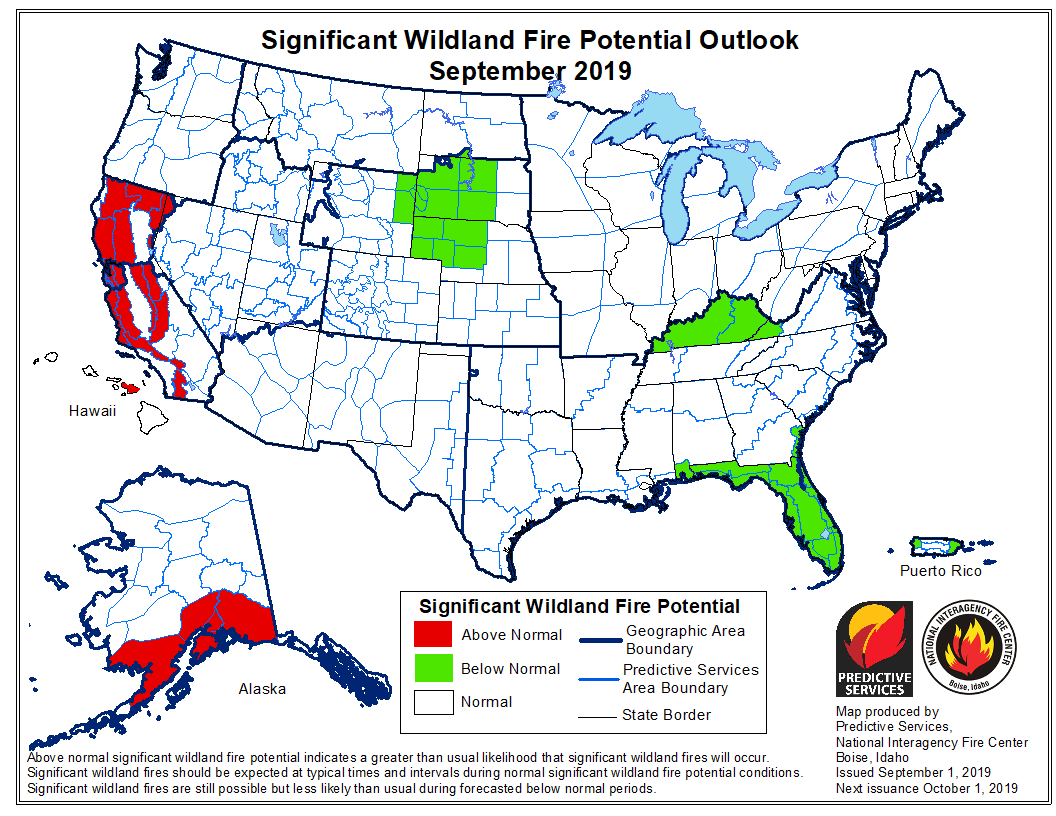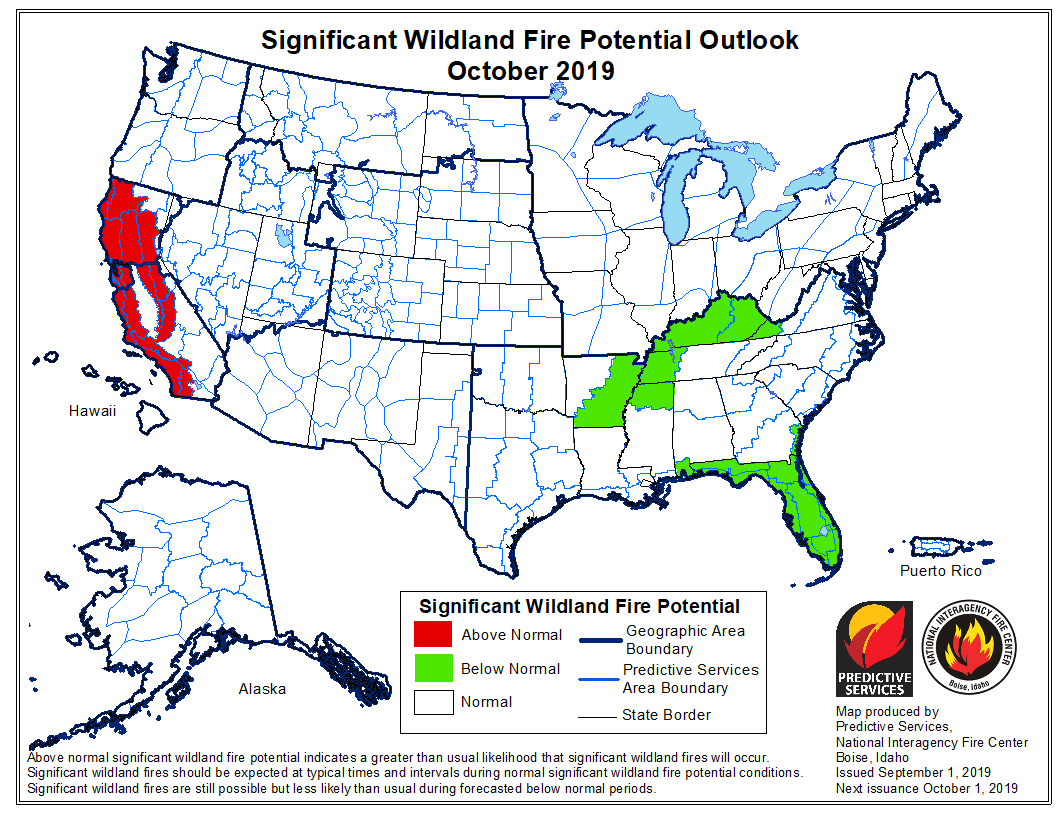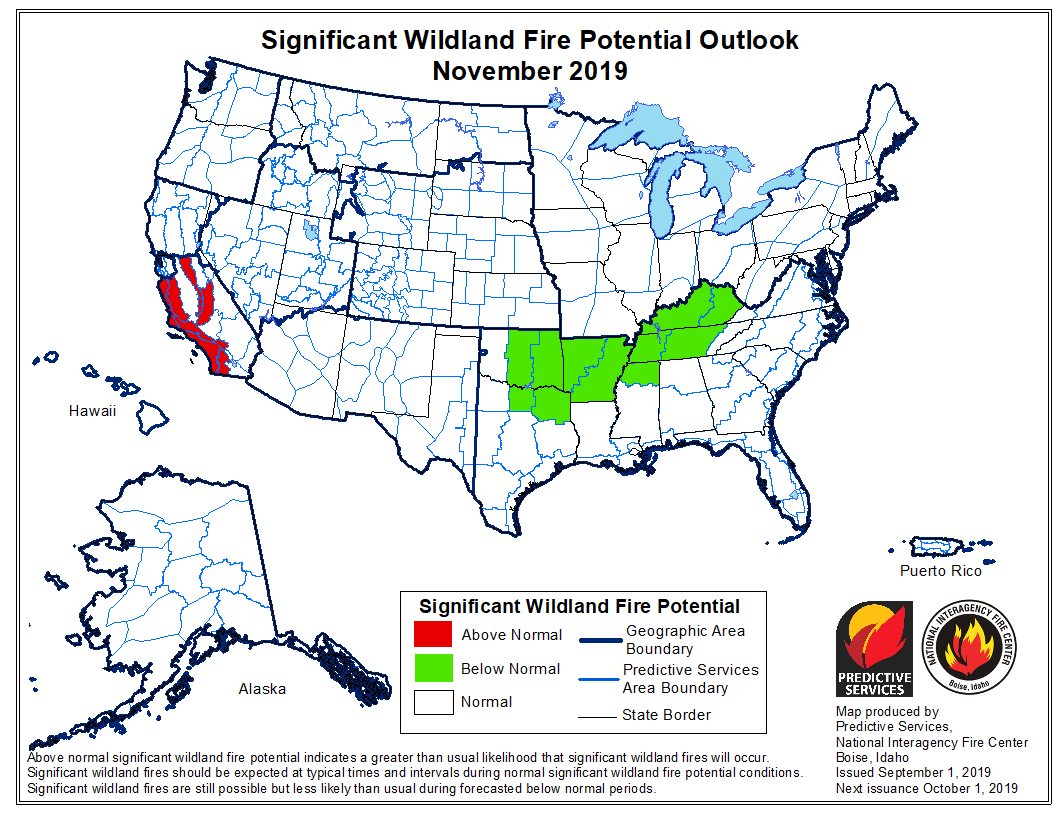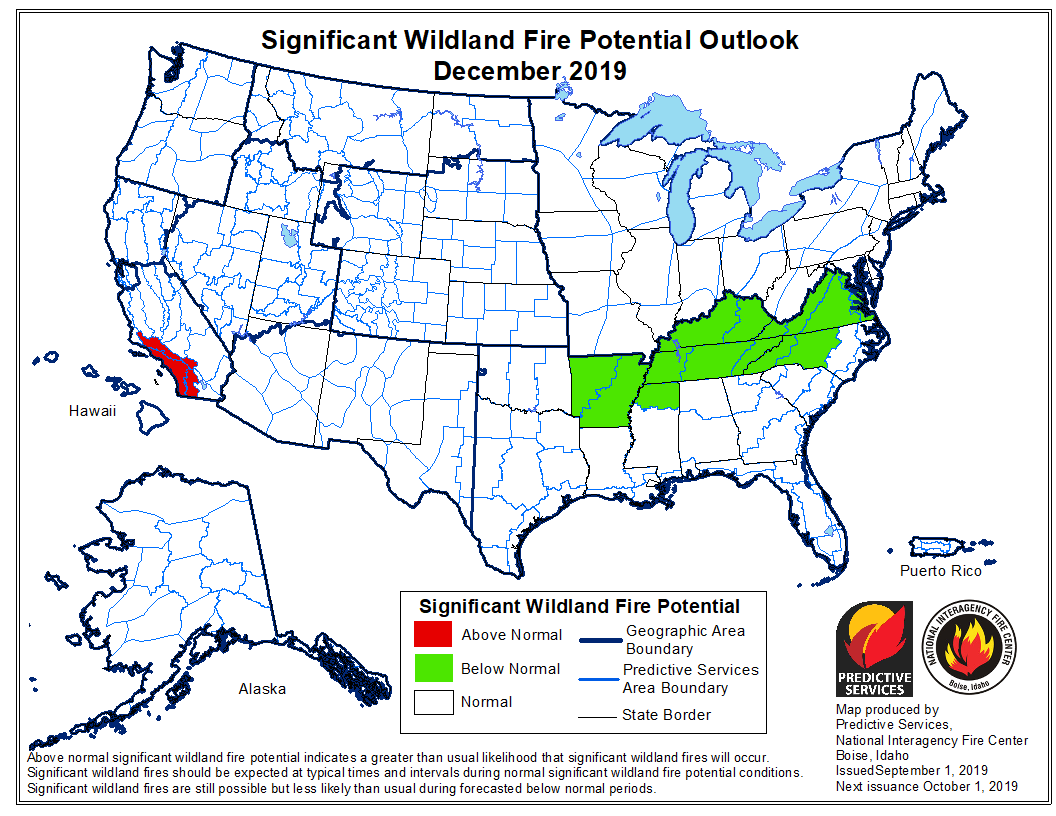On September 1 the Predictive Services section at the National Interagency Fire Center issued their Wildland Fire Potential Outlook for September through December. The data represents the cumulative forecasts of the ten Geographic Area Predictive Services Units and the National Predictive Services Unit.
If NIFC’s analysis is correct, California will be one of two states expected to have areas with above average potential for wildfires, and those sections of California will shrink through December until the only areas remaining are the mountains and coasts from Santa Barbara south to the Mexican border. Southern Alaska could also have above normal fire activity in September.
Below:
- An excerpt from the NIFC narrative report for the next several months;
- More of NIFC’s monthly graphical outlooks;
- NOAA’s three-month temperature and precipitation forecasts;
- Drought Monitor;
- Vegetation greenness map;
- Keetch-Byram Drought Index.
From NIFC:
“Due to the recent lack of rainfall, areas of concern have emerged and are expanding to include Texas, California, Nevada, Utah and southwestern Wyoming – all of which have generally seen less than 25% of average precipitation during the past month. Extended periods of dry conditions across New Mexico and the southern Great Plains are also leading to the development and intensification of drought conditions.
“Entering September, warmer and drier than average conditions are expected to occur along the West Coast, which may persist well into fall. However, the passage of periodic wet systems should gradually end the fire season from north to south across the Northern Rockies, Central Rockies and Great Basin. Texas is expected to remain warmer and drier than average, which may, in turn prolong their season well into fall. Warmer and drier than average conditions are expected across the piedmont of the southern Appalachians, but wet antecedent conditions should preclude fire activity there.
“As the fall progresses, fire activity should relent over the Pacific Northwest and eventually Northern California during October. Southern California will likely be the last area to see fire activity conclude in 2019 as offshore winds and dry fuels may keep fire activity going south of Pt. Conception into December. In Alaska, overall warmer and wetter than average conditions are expected until the state enters winter.”
